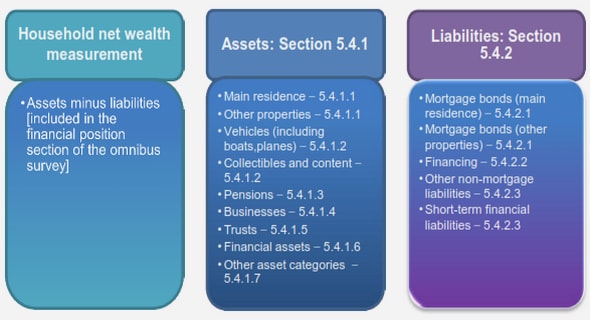Get Complete Project Material File(s) Now! »
Semantic representations
systems, presenting di¢ culties for most. The idea behind the lottery paradox is that there are a number of tickets, say m, and only one ticket that wins. The chance of any speciÖc ticket, say ticket 117, winning is so small that :W in(ticket117) is a likely proposition. The same applies for every other ticket. So it is possible to (defeasibly) infer that the conjunction :W in(ticket1) ^ :W in(ticket2)^: : : ^ :W in(ticketm) is true. But one ticket must win, in other words, the disjunction W in(ticket1)_W in(ticket2)_: : : _ W in(ticketm) must be true. The paradox is clear, it is possible to infer both the conjunction of a number of (likely) propositions and the negation thereof. T-orderings o§er a solution to the lottery paradox. In the example mentioned above, the deÖnite information of one ticket winning, may be represented by assigning all states in which no ticket wins or more than one ticket wins to the top level of the t-ordering, i.e. by deÖnitely excluding those states.
Kripke semantics
Hintikka (1962) originally formalised the informational attitudes of knowledge and belief using a modal logic (Hughes and Cresswell, 1968, 1996; Fitting, 1993) and a possible worlds semantics. This branch of modal logic is called epistemic logic after the Greek word ëepistemeí, meaning ëknowledgeí(Fagin et al., 1995). The basic idea is that besides the actual world, there are a number of possible worlds and some of these worlds may be indistinguishable to the agent. Or, in other words, besides the actual state of the system, there are a number of states that, from the perspectives of the agent, are indistinguishable and equally good candidates for being the actual state. An agent is said to know a fact if the fact is true in all the states the agent considers possible candidates for being the actual state.
Knowledge and belief
accessibility relation is reáexive is a frame-model for every sentence which is an instance of schema T. Schema 4 says that if an agent knows then the agent knows that it knows . Intuitively, it means that agents are capable of positive introspection. The positive introspection may be iterated without limit, suggesting that agents are ideal reasoners in the sense of having unlimited resources1 . Schema 4 characterises frames whose accessibility relations are transitive. Negative introspection is captured by schema 5, which says that if an agent does not know then it knows that it does not know . Again, negative introspection may be iterated without limit. This schema, when taken in conjunction with schemas T and 4, characterises frames whose accessibility relations are not only reáexive and transitive but also symmetric, and thus equivalence relations. Note that on its own, schema 5 characterises frames whose accessibility relations are euclidean, where by an euclidean relation R on X it is understood that for all elements x; y; z 2 X, if (x; y) 2 R and (x; z) 2 R, then (y; z) 2 R.
Knowledge and belief
the system. The information-theoretic semantics is recalled in this section in the context of diagrammable systems with t-orderings deÖned as instances of a templated ordering ADT. As mentioned earlier, in the context of diagrammable systems, the states of the system correspond to a subset of the valuations of some Önitely generated propositional language. The modal language to be constructed from such a propositional language will consist of a number of modal operators for belief, one for every element in the template B associated with the set S of states.
Knowledge and belief
what it believes and knows what it does not believe. The agentís beliefs about its knowledge is reáected by schemas MS3 and MS4. It suggests that if the agent believes (assuming holds) that it knows , then the agent either knows or knows that the assumption is false, and vice versa. Similarly, when the agent believes (assuming holds) that it does not know , then the agent either does not know or knows that the assumption is false, and vice versa. The approach of Moses and Shoham (1993) is comparable to the information-theoretic approach when restricting, as before, to modal operators [n 1] (for knowledge) and [0] (for belief)
Knowledge and belief
notion that if the agent knows and to be mutually exclusive events, and considers i alternatives in which is true and, at the same time, j alternatives in which is true, then altogether the agent has to reckon with i + j alternatives in which either or is true. Schema HM2 says that if the agent foresees at most i exceptions to , then the agent also does so with at most i + 1 exceptions. It suggests a hierarchy of graded knowledge ranging from ëcertainíknowledge through decreasing levels of certainty to ëmost uncertainí knowledge as depicted in the sequence 0 ! 1 ! 2 ! : : : ! k. In the information-theoretic approach, there is a hierarchy of defeasible beliefs ranging from the ëmost tentatively heldíbeliefs through increasing levels of strength to the ëmost strongly heldíbeliefs (or knowledge).
Contents :
- Abstract
- Acknowledgements
- 1 Introduction
- 1.1 Motivation and overview
- 1.2 A readerís guide
- 1.3 Finitely generated transparent propositional languages
- 2 Systems and agents
- 2.1 An illustrative example
- 2.2 Diagrammable systems
- 2.3 Agents in context
- 2.4 Control room agents
- 3 Semantic representations
- 3.1 Semantic information theory
- 3.2 KLM nonmonotonic reasoning
- 3.3 Templated orderings
- 3.4 Syntactic expressions
- 3.5 Semantic information content
- 3.6 Reasoning with t-orderings
- 3.7 The lottery paradox
- 4 Knowledge and belief
- 4.1 Kripke semantics
- 4.2 Information-theoretic semantics
- 4.3 Properties of knowledge and belief
- 4.4 Other models of knowledge and belief
- 4.5 Epistemic entrenchment
- 4.6 T-orderings as epistemic states
- 4.7 Ordinal conditional functions
- 5 Revision and update
- 5.1 AGM belief revision
- 5.2 Knowledge base update
- 5.3 Iterated revision
- 5.4 Templated revision
- 5.5 Templated update
- 5.6 Other frameworks of revision and update
- 5.7 Revision and nonmonotonic reasoning
- 6 Merging
- 6.1 Knowledge base merging
- 6.2 Some merging operations
- 6.3 Merging epistemic states
- 6.4 Social choice theory
- 6.5 Templated merging
- 6.6 Content-based merging
- 7 Conclusion
- 7.1 Summary
- 7.2 Future research
- A Proofs for Chapter
- A.1 Proofs for Section
- A.2 Proofs for Section
- A.3 Proofs for Section
- A.4 Proofs for Section
- B Proofs for Chapter
- B.1 Proofs for Section
- B.2 Proofs for Section
- C Proofs for Chapter
- C.1 Proofs for Section
- C.2 Proofs for Section
- D Proofs for Chapter
- D.1 Proofs for Section
- D.2 Proofs for Section
- D.3 Proofs for Section
- Bibliography
GET THE COMPLETE PROJECT
CONTROL ROOM AGENTS: AN INFORMATION-THEORETIC APPROACH


